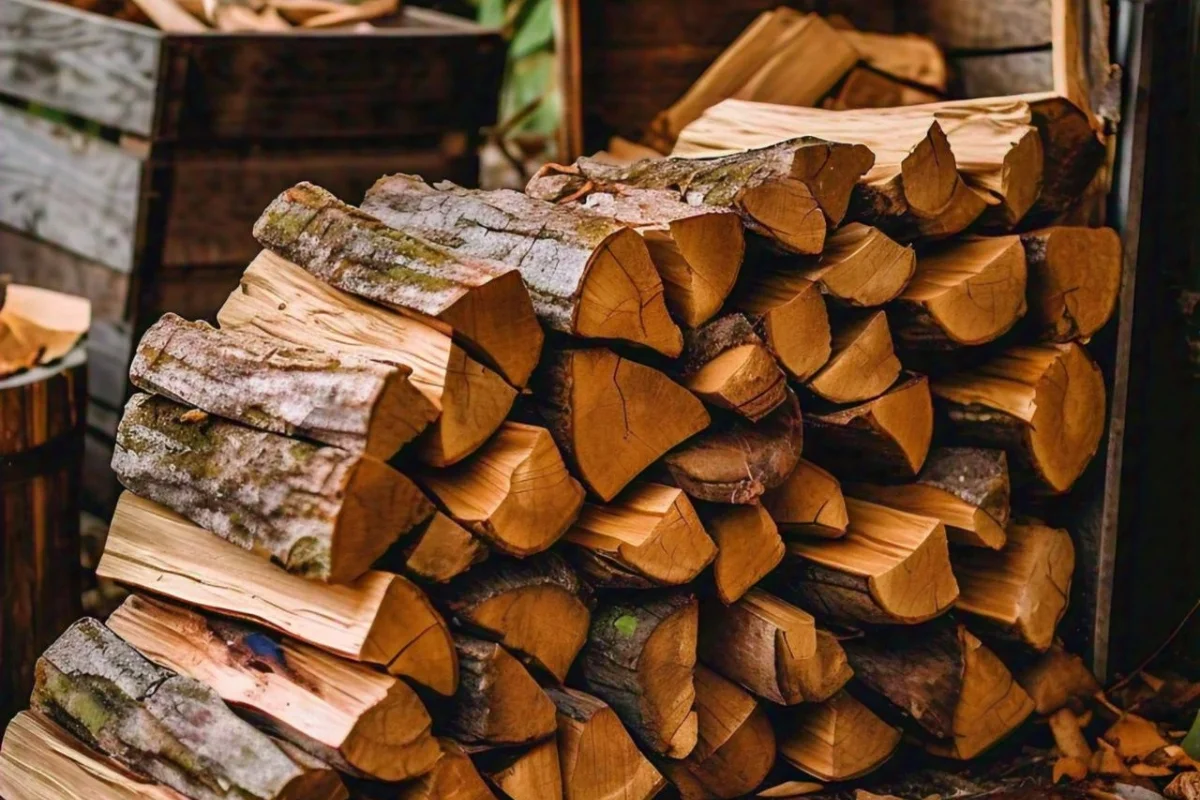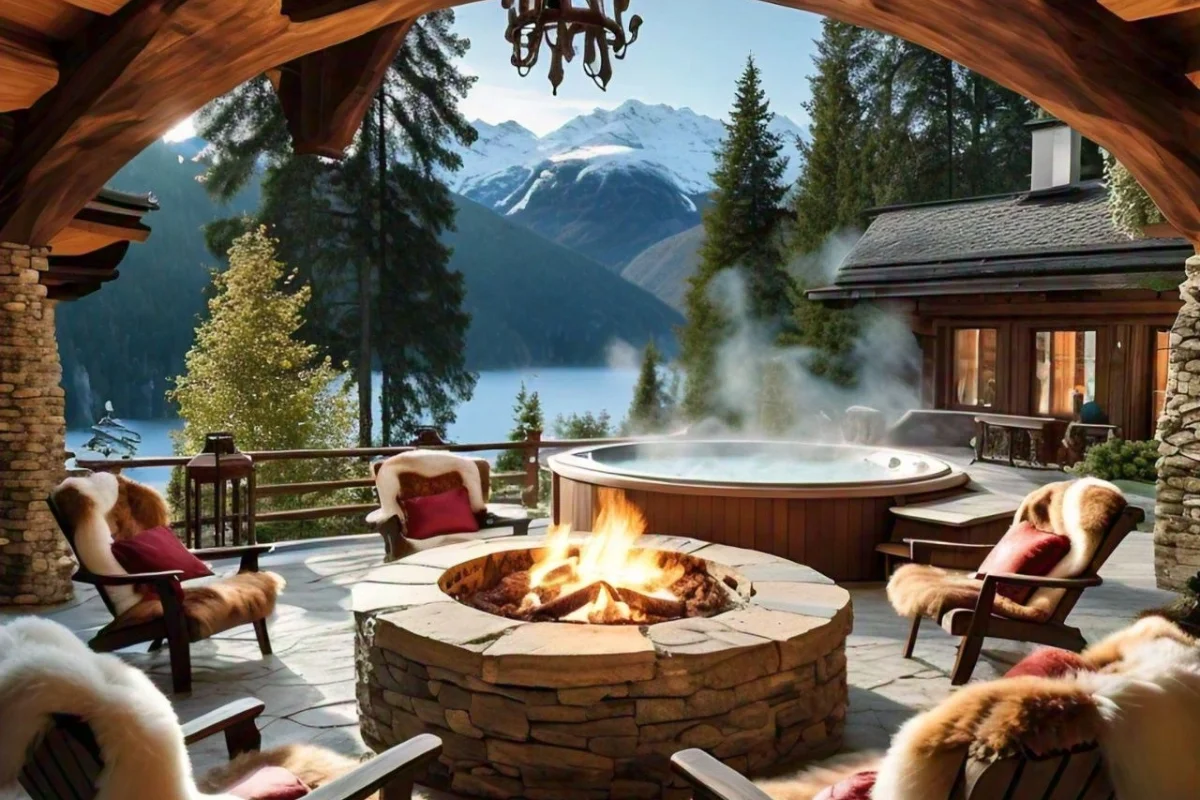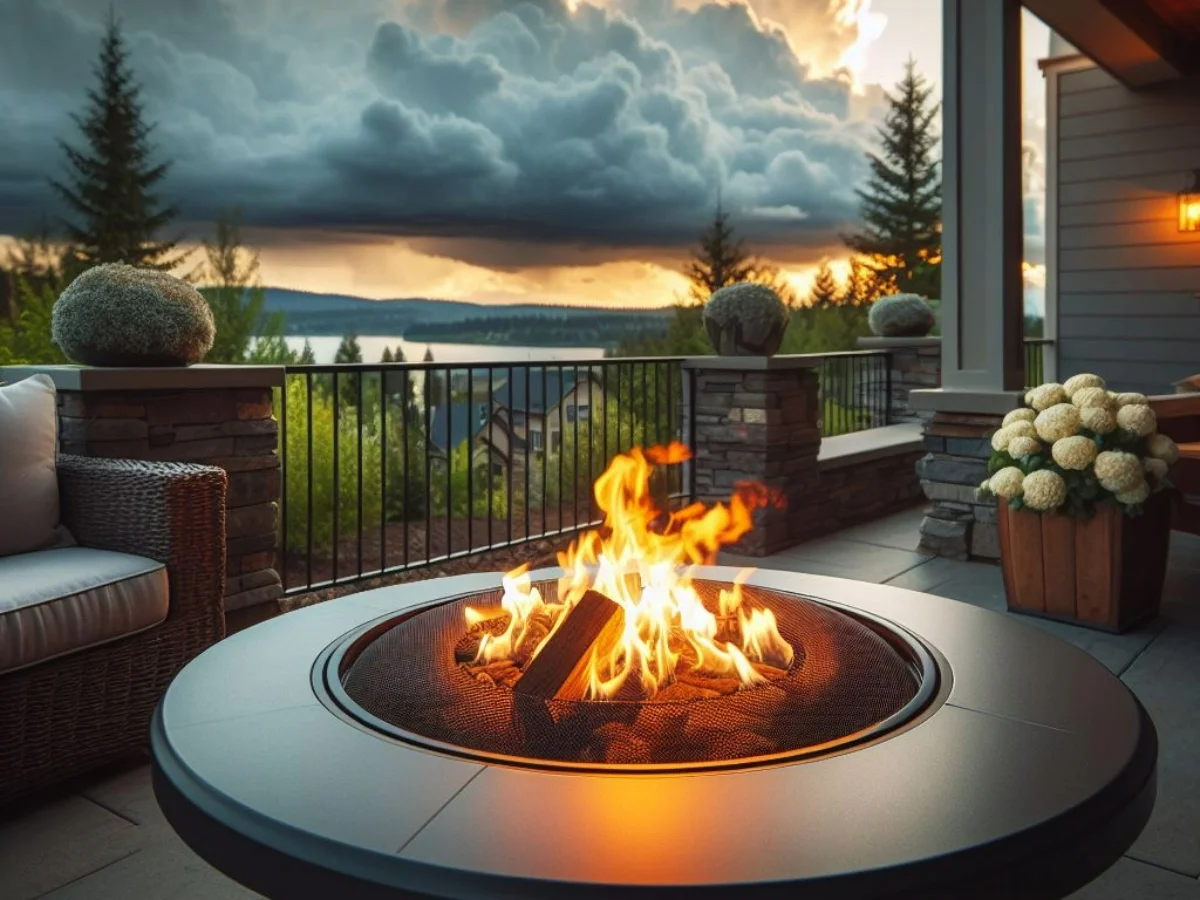Fire pits are a popular outdoor feature perfect for warmth, ambiance, or simply to enjoy the outdoors. Many people ask is a propane fire pit considered an open fire, and this distinction is important for a number of reasons: safety, legality, and environmental impact. This blog post will define open fires, discussed regulations and outline the key differences between a propane fire pit and a traditional open fire.

What is an Open Fire?
An open fire is typically defined as any fire that does not have a full enclosure and is capable of sparks or embers to be emitted into the environment. There are several examples of open fires, including campfires, bonfires and wood-burning fire pits. Open fires are often built directly on the ground or in an open area, which allows for the flames and smoke to interact openly with the air. This open behavior of fires increases the potential for fire to spread, particularly in dry or windy conditions. Understanding the definition of open fire is important to be in compliance with any fire bans or safety regulations, which are typically enacted due to dry fire conditions or to avoid wildfires and safeguard public health.
Regulations on Open Fires:
The use of open fires are often prohibited in many situations and locations for safety and environmental concerns. The specific regulations can depend on the location and type of fire.
United States Regulations:
In the United States, the Occupational Safety and Health Administration (OSHA) has strict regulations against open fires and fires in drums or containers at marine terminals. The regulations are intended to protect the safety of workers and to prevent accidents in these high-risk environments.
British Columbia, Canada regulations:
In British Columbia, Canada, open fires are categorized according to size and number of concurrently burning piles. The categories are: –
Category 1 Fires (Campfires):
Campfires must be less than 0.5 meters high by 0.5 meters wide. These fires are small-sized and controlled; they are often allowed for recreational purposes but still require adherence to fire safety regulations
Category 2 Fires:
Incorporate 1-2 concurrently burning piles less than 2 meters high by 3 meters wide. Activities such as small-scale burning, which may include yard debris or a small land clearing operation. Fuel breaks must be established around the burn areas to prevent the fire from spreading.
Category 3 Fires:
Include larger-scale burning activities where there are 3 or more concurrently burning piles or piles that are greater than 2 meters high by 3 meters wide. All Category 3 fires must have a burn registration number so that the relevant authorities are aware, and are able to monitor, any planned burning activities that are anticipated to be greater than Category 2 in size.
United Kingdom Regulations:
In the UK, open fires are regulated by Approved Document J to ensure that sufficient air supply and ventilation are available for indoor fires and appliances. For an open fire to comply with the building regulations, the following standards will be required; –
Adequate Air Supply:
A certificated permanent opening air vent which should not be adjustable, should be of a size appropriate for the fireplace, and should not be obstructed. This is to ensure that a fire burns safely and efficiently, maintaining the fireplace performance
Ventilation Requirements:
In noisy areas, sometimes it is necessary to use noise-attenuated ventilators that will meet the mechanical requirements for ventilation and the design conditions.

Is a Propane Fire Pit Considered an Open Fire?
A propane fire pit is generally not considered an open fire due to its controlled and contained nature. Unlike traditional open fires, which are exposed to flames and embers, a propane fire pit can have a controlled flame, with a valve or switch to turn on and off, or bind the flame and are placed inside an enclosure of metal or stone. Propane fire pits cut down the risk for fire and are therefore exempted from many regulations that open fires are subjected to.However, it is crucial to check with your local fire department for any restrictions on propane fire pits in your area.
Key Differences Between Propane Fire Pits and Open Fires:
There is a significant difference between propane firepits and open flames with respect to safety, environmental effect, and compliance considerations
Safety and Control:
The propane fire pit has features that make it safer than an open camp fire. These devices have no exposed flames, and it is simple to turn the fire on or off using the values or switches. An open flame could present a danger in windy or dry circumstances when embers or sparks may be blown or carried to risk causing a fire.
Containment and Design:
Because of the structure which holds the propane, the fire is well contained; typically the fire is kept in a metal or stone structure—this helps prevent spreading of the fire. Open fires do not have the same kind of enclosure so the fire may easily go from an intentional area to an unwanted area.
Environmental Impact:
The propane fire pit produces approximately half of the emissions as an open burn, and therefore it is cleaner from an air quality standpoint. Propane burns cleaner than wood, so the source of the pollutants is reduced and less is produced.
How Propane Fire Pits are Treated Under Fire Bans:
During fire bans, propane fire pits are often favored over open fires due to their controlled nature. They are often considered as exceptions to bans as they provide controlled flames and are less likely to start a wildfire. This means that you can still enjoy an outdoor fire responsibly during a fire ban using a propane fire pit. Learn more about how propane fire pits are treated under fire bans in our article on “are propane fire pits allowed during a fire ban”.










1 thought on “Is a Propane Fire Pit Considered an Open Fire?”
Your blog is a true hidden gem on the internet. Your thoughtful analysis and engaging writing style set you apart from the crowd. Keep up the excellent work!